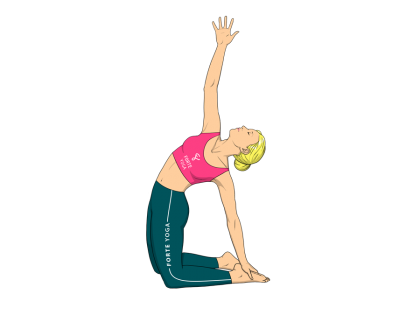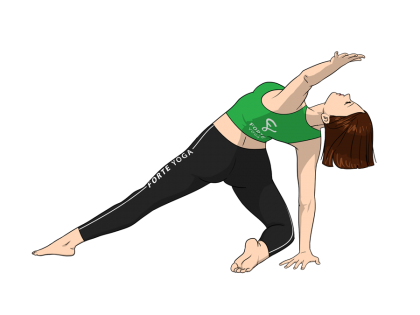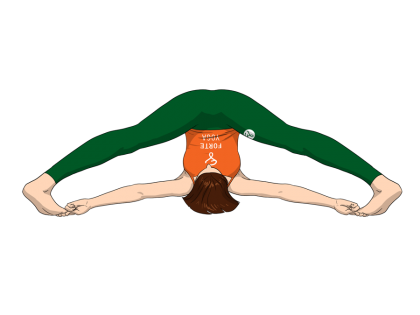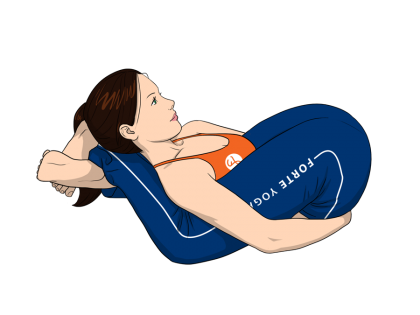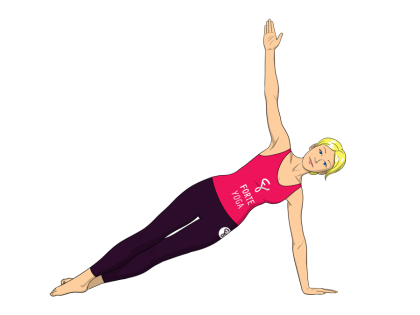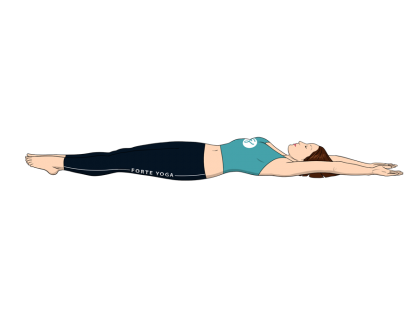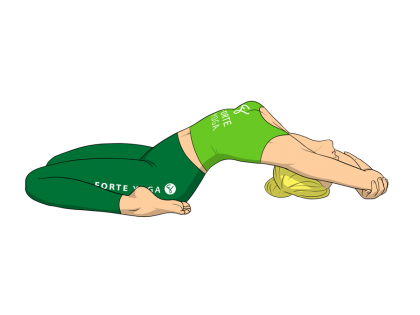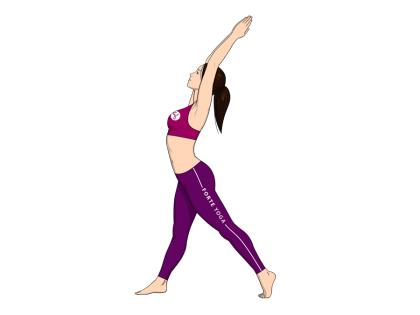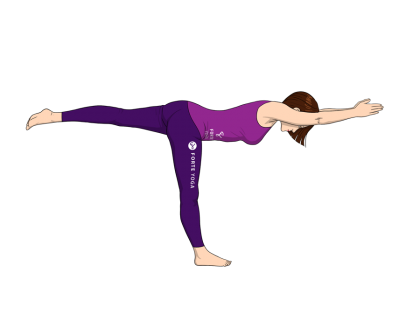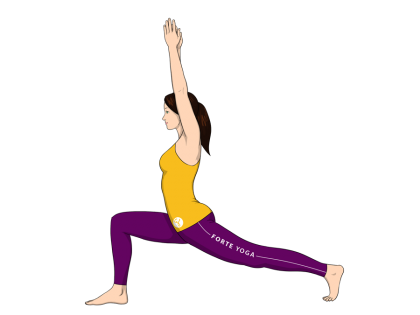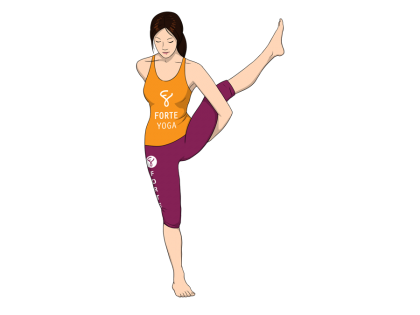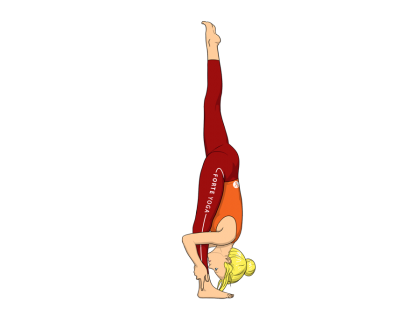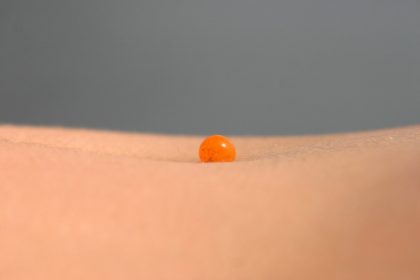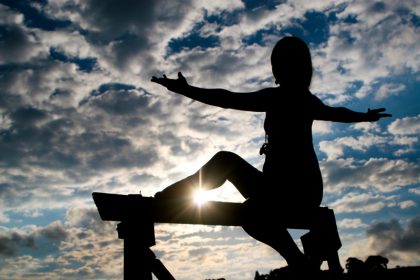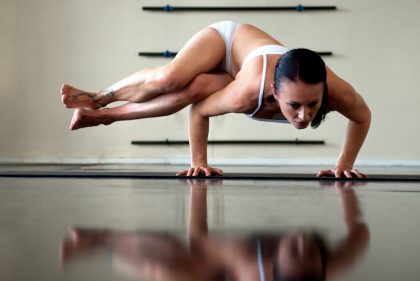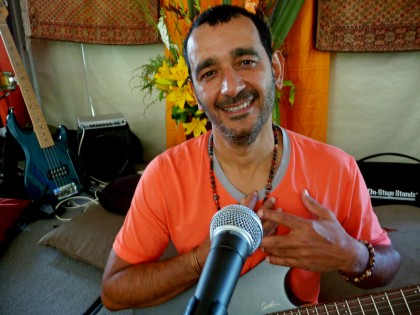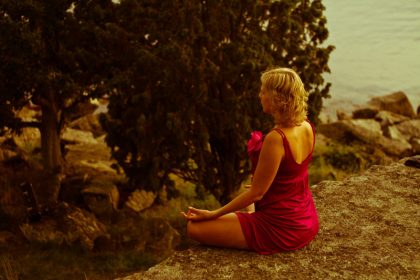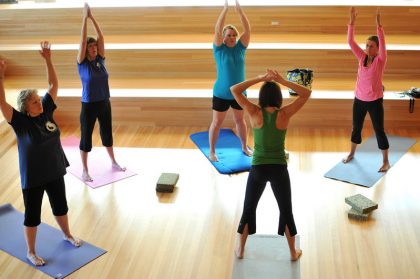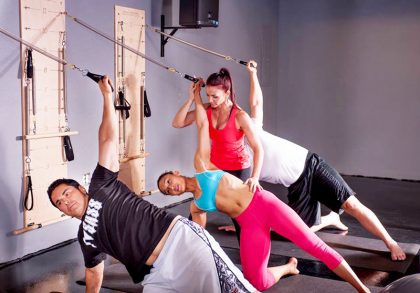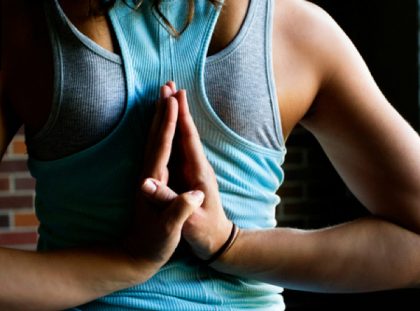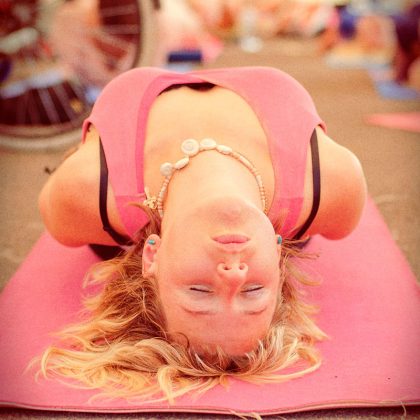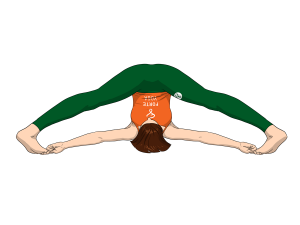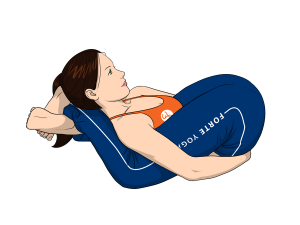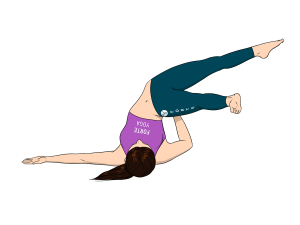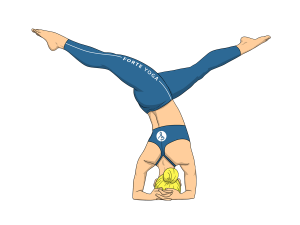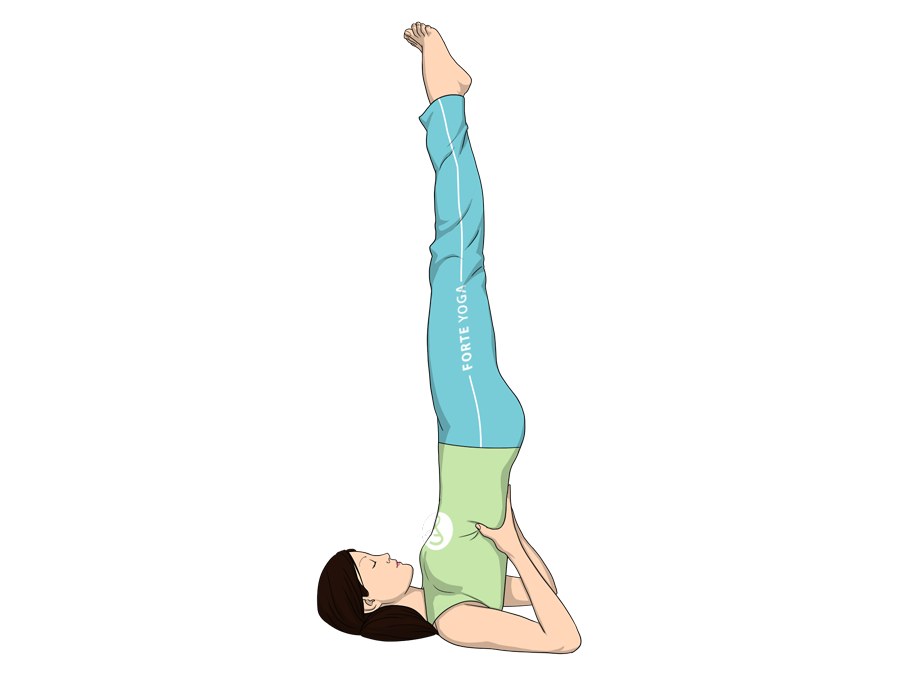
Supported Shoulderstand Yoga Pose is a balance, inversion pose that targets the shoulders and is ideal for yogis and yoginis at an intermediate level.
 visuddha – the throat chakra
visuddha – the throat chakra[yoga-sharrre]
- Fold up one or two towels, blankets or mats, stacking them on top of each other. Place them on your mat, on the floor or underneath the mat, positioned a few inches away from one end. Lay on your back, shoulders resting at the edge of the stack so that your neck and head are over the mat, head resting on the ground and arms resting on the floor alongside your torso. Your knees should be unbent, legs extended on the mat.
- Exhale and lift your feet off the ground and over your head, legs straight. Place your hands on the small of your back for balance and support, fingers spread and pointing upward, and bring your toes to the floor on the other side of the crown of your head. Elbows should be bent, shoulder length apart, your upper arms pressed against the floor. Pull your shoulders in, making sure they are firm so you have a strong base.
- From this position, inhale as you lift your legs up so your toes are pointing up at the ceiling. You may raise them simultaneously or one at a time. Concentrate on positioning your hip bones just over your shoulders, actively pushing your hands on your lower back for support. Keep your tailbone pulled inward, resisting the urge to bend at the hips and lower your knees towards your chest. Be sure not to put any weight on your head or neck.
- Without moving your head or neck, lift your sternum up toward your chin. Push into the blanket or towel support with your shoulders and upper arms, lifting your spine up and away from the floor.
- Start out with a goal of 30 seconds, but hold the position as long as you can do so comfortably. If possible, try to add time in 5-10 second intervals until you can hold the pose for 3-5 minutes. To come out of the position, keep your hands on the small of your back and lower your legs by bringing them straight down, toes towards the floor, or by bending your knees into your torso. From here, lower yourself out of the pose by slowly rolling out onto the floor starting at your shoulders, keeping your neck and head stationary.
- Breathe deeply through each step.
- Do not attempt if you have spinal injury, diarrhea, high blood pressure (hypertension) or are suffering from headaches.
- Do not perform during menstruation. If you are pregnant, only perform this position if you are experienced with it — do not attempt to learn this pose while pregnant. Even if you are experienced, it’s recommended that you consult your physician prior to practicing.
For more support, try positioning your mat so that one of the short edges is flush against the wall. Lay on your back so that your legs are straight up, hamstrings and calves pressed against the wall. Again, make sure the stack of towels or blankets is positioned under your back at the shoulders, so that your head is resting on the mat. Continue into the Supported Shoulderstand from this position, pushing actively through your feet as you walk them up the wall.
Do not allow your upper arms to roll inward; keep your elbows as close together as possible, at most shoulder-length apart. This will prevent you from sinking or from misplacing your weight and potentially injuring the neck.
All Muscles: Hamstrings, calves, buttocks, abs, shoulders, neck
Target Muscles: Shoulders, neck
- Can help treat insomnia and fatigue.
- Can relieve stress, anxiety and mild depression.
- Can improve digestion.
- Stimulates thyroid and prostate glands.

